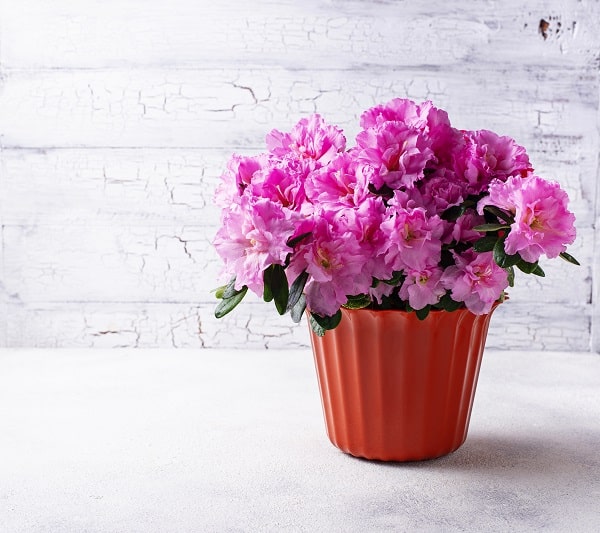Houseplants enhance living spaces with their vibrant colors and lush greenery, often contributing to both aesthetics and air quality. Some plants, however, contain substances that are toxic to dogs, creating a hidden danger in many households. Dog owners who love to decorate with plants must be mindful of their selections, as what brings beauty to the home may also bring harm to their beloved pets. This post explores specific houseplants that are toxic to dogs, their appealing characteristics, and the symptoms they may cause if ingested by a canine companion. It aims to educate and guide dog owners in making safe choices.
Jade Plant (Crassula ovata)

The Jade Plant, scientifically known as Crassula ovata, is a popular succulent recognized for its shiny, jade-green leaves and delicate blossoms. Its fleshy leaves and ease of care make it a favorite among gardeners and homeowners alike. However, this beautiful plant hides a toxic secret. When ingested by dogs, substances within the plant can lead to vomiting, depression, and even coordination issues.
Owners must take precautions when keeping Jade Plants in homes with dogs. Beyond the lush appearance lies a danger that requires responsible care and potentially placing the plant out of reach. Recognizing symptoms early and seeking veterinary care can make a significant difference in the outcome, potentially saving the pet’s life if an accidental ingestion occurs.
Dumb Cane (Dieffenbachia seguine)

The Dumb Cane, with its scientific name Dieffenbachia seguine, holds a prominent position in many homes due to its large, variegated leaves that add a fresh touch of greenery. With the ability to thrive in a range of indoor conditions, this plant is often an attractive choice for those seeking low-maintenance options. Unbeknownst to many, however, the Dumb Cane harbors toxic substances which can pose severe health threats to dogs.
The plant contains calcium oxalate crystals, which can cause intense mouth pain, drooling, and difficulty swallowing in dogs. In severe cases, ingestion can even lead to vomiting, breathing difficulties, and a loss of appetite. Given the potential harm, it’s essential to position this plant out of a dog’s reach or choose a different plant altogether. If a dog does ingest Dumb Cane, immediate veterinary attention is required.
Aloe Vera (Aloe barbadensis miller)

Aloe Vera, scientifically known as Aloe barbadensis miller, is cherished for its myriad of healing properties. Many households keep this succulent on hand for its soothing gel, which is often used for minor burns or skin irritations. However, what is beneficial to humans can be harmful to pets, and in the case of dogs, ingestion of the Aloe Vera plant can result in toxicity.
While the gel is typically safe, the plant’s outer skin and inner layer, known as the latex, contain aloin, a substance that can cause vomiting, diarrhea, loss of appetite, and depression in dogs. As such, dog owners must ensure that their Aloe Vera plants are safely out of their dogs’ reach. If a dog shows any signs of Aloe Vera ingestion, it is advisable to seek veterinary care without delay.
Azaleas (Rhododendron spp.)

Azaleas, belonging to the Rhododendron genus, are popular choices for indoor and outdoor decoration, admired for their vibrant blooms and dense foliage. Their striking colors can range from bright pinks and reds to more subtle whites and purples, making them a visually appealing choice for any home. Nevertheless, all parts of these beautiful plants are highly toxic to dogs.
Even in small amounts, ingestion can cause drooling, loss of appetite, diarrhea, vomiting, and general weakness in dogs. In severe cases, it can lead to a drop in blood pressure, coma, and even death. Given the significant risks associated with azaleas, owners must be vigilant in preventing their dogs from accessing these plants. Any suspicion of Azalea ingestion warrants immediate veterinary attention.
English Ivy (Hedera helix)

English Ivy, or Hedera helix, is a popular choice for its ornamental value, thanks to its lush, trailing vines. This versatile plant can create a beautiful cascading effect in indoor pots, adding a touch of nature-inspired decor to any room. Yet, the attractive aesthetics of this plant come with a hidden danger; it is toxic to dogs.
When ingested, English Ivy can cause vomiting, abdominal pain, hypersalivation, and diarrhea in dogs. In severe cases, it may even result in a condition known as ataxia, which involves a lack of muscle control. Dog owners who have English Ivy in their homes should keep the plant well out of their pet’s reach. Any signs of ingestion should be treated as an emergency and necessitate immediate veterinary attention.
Philodendrons (Philodendron bipinnatifidum)

Philodendrons, specifically Philodendron bipinnatifidum, are a top pick among indoor gardeners due to their luscious leaves and the added benefit of air purification. However, this popular houseplant contains calcium oxalate crystals, which are toxic to dogs.
If a dog ingests Philodendrons, symptoms may include oral pain, excessive drooling, pawing at the mouth, and in severe cases, swelling of the upper airway leading to difficulty breathing. It’s recommended for dog owners to either opt for safer alternatives or ensure these plants are kept in an area inaccessible to their pets. If a pet displays signs of Philodendron poisoning, immediate veterinary care is essential.
The Bottom Line
Choosing houseplants requires careful thought for dog owners. Certain attractive and popular plants pose severe health risks to canines when ingested. Knowledge of these plants and their symptoms can help in prompt recognition and treatment of any toxic exposures. Although this guide discusses some toxic plants, there are many others. Therefore, owners are advised to research any plant before bringing it into a home with dogs. Finally, if any plant ingestion occurs, regardless of the plant type, it’s always safest to contact a veterinarian promptly.